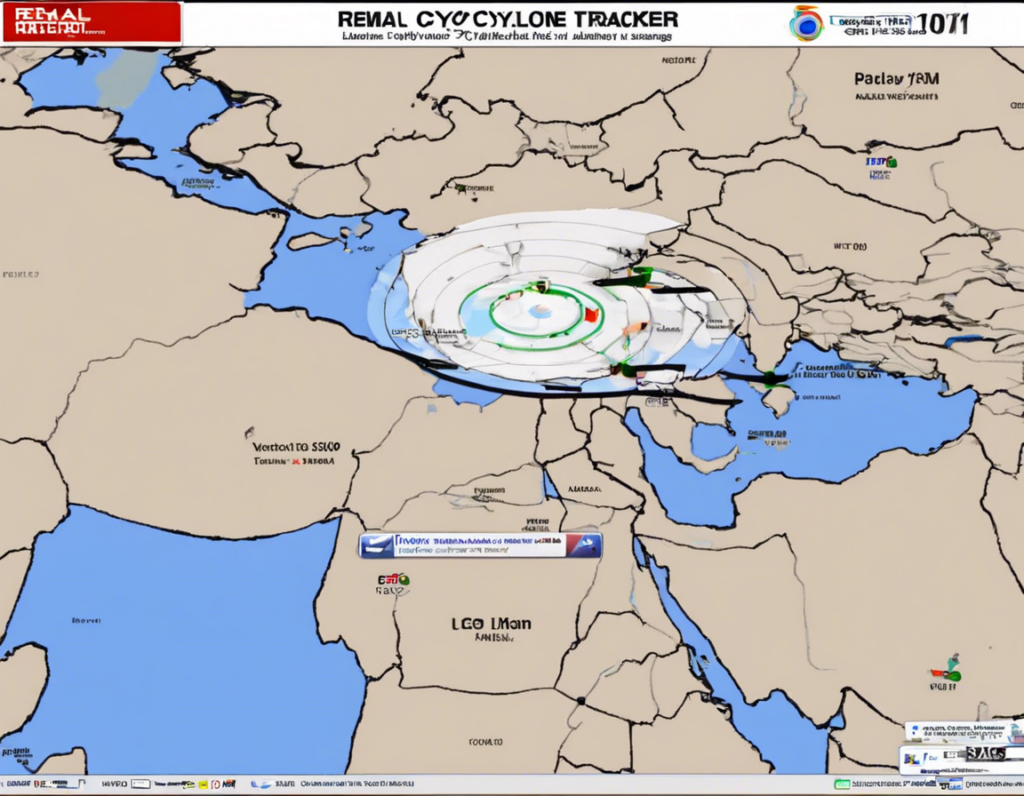Severe weather events such as cyclones can have devastating impacts on communities, infrastructure, and the environment. With the advancements in technology and meteorological science, tracking cyclones in real-time has become more efficient and accurate than ever before. One such recent cyclone that has drawn attention is Cyclone Gulab, also known as Remal Cyclone, which made landfall on the eastern coast of India on September 26, 2021.
Understanding Cyclones:
Cyclones are intense circular storms that originate over warm tropical oceans and are characterized by low atmospheric pressure, strong winds, and heavy rains. They are classified into different categories based on their wind speeds, with the most severe ones called hurricanes, typhoons, or cyclones depending on the region where they occur. Tracking these cyclones is crucial for early warning systems, disaster preparedness, and mitigation efforts.
Real-time Tracking of Cyclone Gulab:
With the help of satellites, radar systems, weather stations, and computer models, meteorologists can track cyclones in real-time and predict their path with increasing accuracy. Cyclone Gulab was first detected in the Bay of Bengal, and meteorological agencies started monitoring its movement and intensity as it approached the coastal areas of India.
Key Updates on Cyclone Gulab:
- Landfall: Cyclone Gulab made landfall near Kalingapatnam in Andhra Pradesh and Gopalpur in Odisha on the evening of September 26, 2021.
- Intensity: It was classified as a ‘cyclonic storm’ with wind speeds reaching up to 75-85 km/hour.
- Impact: Heavy rainfall, strong winds, and storm surges were reported in the affected regions, causing disruptions to daily life and posing risks to infrastructure.
Importance of Live Map Updates:
Live map updates play a crucial role in tracking the path of a cyclone, predicting its intensity, and issuing timely warnings to the vulnerable populations in its trajectory. By regularly checking the latest map updates provided by meteorological agencies and disaster management authorities, people can stay informed about the evolving situation and take necessary precautions to ensure their safety.
How to Interpret Live Map Updates:
- Cyclone Track: The map shows the current position of the cyclone and its projected path over the next few hours or days.
- Intensity Zones: Different colors or symbols on the map indicate the intensity zones of the cyclone, helping viewers understand the potential impact in various areas.
- Warnings: Areas under cyclone warnings, such as storm surge warnings, wind warnings, or rain alerts, are highlighted on the map to alert the public and authorities.
Tips for Safe During a Cyclone:
- Stay Indoors: Seek shelter in a sturdy building away from windows and doors.
- Stock Essentials: Keep a stock of food, water, medications, and emergency supplies.
- Stay Informed: Listen to official updates and follow evacuation orders if issued.
- Secure Property: Secure loose objects and reinforce doors and windows to minimize damage.
Frequently Asked Questions (FAQs):
Q1: What Are the Different Categories of Cyclones?
A1: Cyclones are classified as tropical depressions, storms, and hurricanes based on their wind speeds and intensity.
Q2: How Do Meteorologists Track Cyclones?
A2: Meteorologists use satellites, radar systems, weather buoys, and computer models to track cyclones and predict their paths.
Q3: What Should I Do If a Cyclone Is Approaching?
A3: Follow official instructions, secure your property, gather essential supplies, and seek shelter in a safe location.
Q4: How Accurate Are Cyclone Forecast Models?
A4: Cyclone forecast models have improved significantly in accuracy over the years, but uncertainties still exist, especially regarding rapid intensification.
Q5: What Is the Role of Early Warning Systems in Cyclone Preparedness?
A5: Early warning systems help alert communities in advance about the potential risks of cyclones, facilitating timely evacuations and preparedness measures.
In conclusion, staying updated with live map updates and following safety guidelines are crucial during cyclones like Cyclone Gulab. By leveraging technology and scientific advancements, we can better prepare for and mitigate the impacts of these natural disasters, ultimately saving lives and reducing damages.
